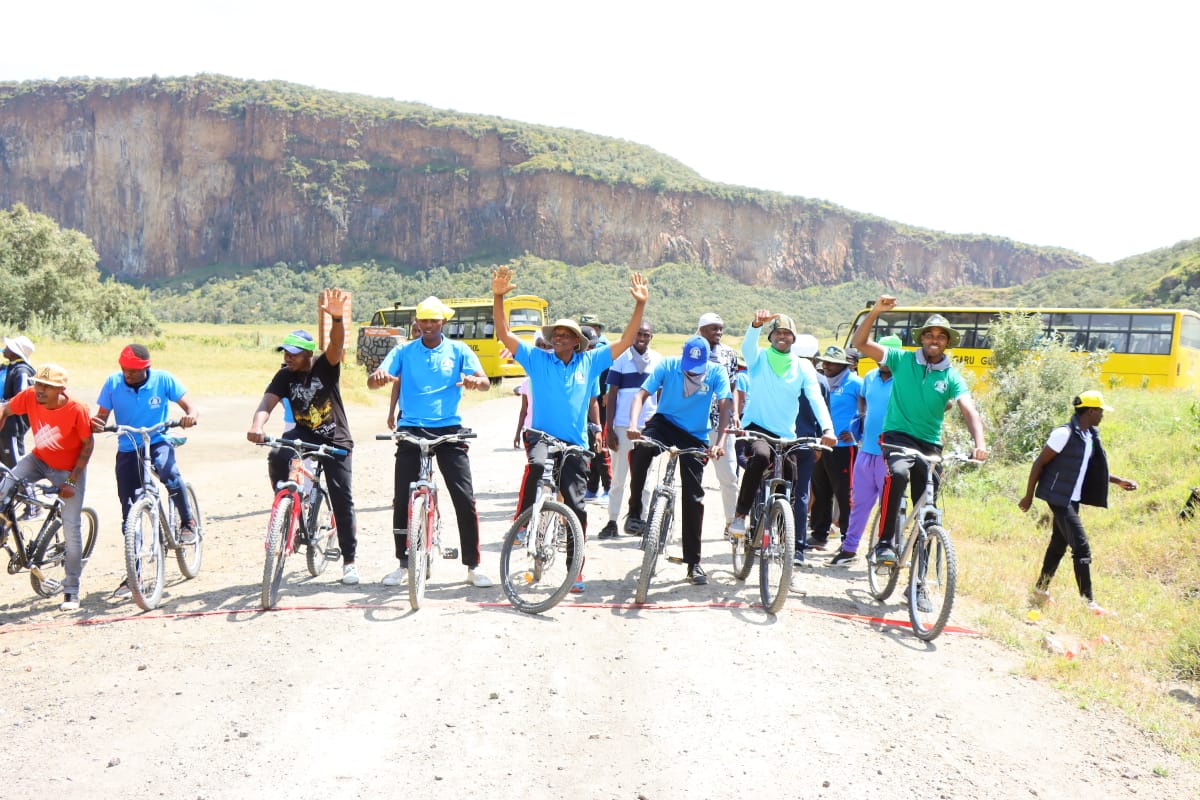In today’s fast-paced and increasingly collaborative work environment, the ability to work effectively as part of a team is more critical than ever. Teams that function well together are not only more productive, but they also foster a more positive and enjoyable work atmosphere. However, building such cohesive teams doesn’t happen by accident—it requires intentional effort, strategic planning, and a commitment to ongoing development. This is where the power of teambuilding comes into play.
Teambuilding is the process of transforming a group of individuals into a united, high-performing team. It involves activities, exercises, and strategies designed to enhance communication, collaboration, trust, and overall team dynamics. In this comprehensive article, we’ll explore the power of teambuilding and provide actionable insights on how to cultivate stronger, more cohesive teams within your organization.
Why Teambuilding Matters
Teambuilding is not just a buzzword; it’s a vital component of organizational success. Here are some of the key reasons why teambuilding is so important:
Enhanced Communication: Effective communication is the cornerstone of any successful team. Teambuilding activities create opportunities for team members to engage in open and honest dialogue, breaking down barriers and encouraging a free flow of ideas. When team members communicate effectively, misunderstandings are minimized, and collaboration is strengthened.
Increased Trust and Collaboration: Trust is the glue that holds teams together. Without it, collaboration can falter, and productivity can suffer. Teambuilding exercises often involve trust-building activities that encourage team members to rely on one another, fostering a sense of mutual respect and collaboration. When team members trust each other, they are more willing to share ideas, take risks, and support one another in achieving common goals.
Improved Problem-Solving: Diverse teams bring a variety of perspectives and skills to the table, which can enhance problem-solving capabilities. Teambuilding activities that involve challenges or problem-solving tasks encourage team members to think creatively and work together to find solutions. This collaborative approach not only leads to better outcomes but also strengthens the team’s ability to tackle future challenges.
Boosted Morale and Job Satisfaction: Teambuilding events often inject a sense of fun and camaraderie into the workplace, which can boost morale and job satisfaction. When employees feel connected to their team and enjoy working together, they are more likely to be engaged, motivated, and committed to their work. This positive atmosphere can lead to higher retention rates and a more positive organizational culture.
Enhanced Adaptability and Resilience: In today’s ever-changing business environment, teams must be adaptable and resilient. Teambuilding activities that involve change management or adaptability exercises help teams develop these essential skills. By working together to navigate change, teams become more agile and better equipped to handle future challenges.
Key Elements of Effective Teambuilding
While the benefits of teambuilding are clear, achieving these outcomes requires a thoughtful and strategic approach. Here are some key elements to consider when planning and implementing teambuilding initiatives:
Clear Objectives: Before embarking on any teambuilding activity, it’s essential to establish clear objectives. What do you want to achieve? Whether it’s improving communication, building trust, or fostering creativity, having a clear goal will guide the selection of activities and ensure that the teambuilding efforts are focused and effective.
Inclusivity and Participation: For teambuilding to be successful, it’s important that all team members are included and encouraged to participate. Activities should be designed to accommodate different personalities, skill levels, and interests. By creating an inclusive environment where everyone feels valued and engaged, you’ll ensure that the teambuilding efforts resonate with the entire team.
Relevance to Work: While fun and light-hearted activities have their place, teambuilding is most effective when it is relevant to the work context. Choose activities that reflect real-world challenges or scenarios that your team may face. This approach not only makes the experience more meaningful but also helps to reinforce key skills and lessons that can be applied in the workplace.
Diverse Activities: No single activity will address all aspects of team development. To build a well-rounded team, it’s important to incorporate a variety of activities that target different areas such as communication, problem-solving, creativity, and trust. Mixing up the types of activities also keeps the experience fresh and engaging for participants.
Debrief and Reflection: One of the most important aspects of teambuilding is the debrief or reflection period that follows the activity. This is the time for team members to discuss what they learned, how they felt, and how the experience can be applied to their work. Facilitating open discussions during the debrief helps to solidify the lessons learned and encourages continuous improvement.
Regular and Ongoing Efforts: Teambuilding is not a one-time event but an ongoing process. Regularly scheduled teambuilding activities help to maintain momentum and ensure that the team continues to develop and grow together. Ongoing efforts also provide opportunities to address new challenges as they arise and to reinforce key team dynamics over time.
Popular Teambuilding Activities and Exercises
There is a wide range of teambuilding activities that can be tailored to suit different teams and objectives. Below are some popular options that have proven effective in fostering stronger, more cohesive teams:
Escape Rooms: Escape rooms are a fun and challenging way to promote teamwork and problem-solving. Teams must work together to solve puzzles and complete tasks in order to “escape” within a set time limit. This activity encourages communication, collaboration, and creative thinking.
Team Challenges: Physical or mental challenges, such as obstacle courses or trivia games, can help build trust, teamwork, and a sense of accomplishment. These challenges often require team members to rely on each other’s strengths, making them ideal for fostering collaboration.
Workshops and Skill-Building Sessions: Workshops focused on specific skills, such as communication, leadership, or conflict resolution, provide valuable learning opportunities while also serving as teambuilding exercises. These sessions can be customized to address the unique needs of the team.
Creative Group Projects: Engaging in a creative project, such as building something together or participating in a group art activity, can enhance team bonding and encourage out-of-the-box thinking. These activities provide a break from the usual routine and allow team members to connect on a different level.
Outdoor Adventures: Outdoor activities like hiking, rafting, or camping can be excellent teambuilding experiences. These adventures require teams to work together, communicate effectively, and support each other in a dynamic environment. They also provide a refreshing change of scenery that can reinvigorate the team.
Trust Exercises: Trust exercises, such as trust falls or blindfolded navigation tasks, are designed to build trust and reliance among team members. While these activities may push participants out of their comfort zones, they can be highly effective in strengthening team bonds.
Role-Playing Scenarios: Role-playing exercises allow team members to step into different roles and explore various perspectives. This can be particularly useful for improving empathy, understanding, and communication within the team.
Measuring the Impact of Teambuilding
To ensure that your teambuilding efforts are effective, it’s important to measure the impact of these activities on your team. Here are some ways to assess the success of your teambuilding initiatives:
Surveys and Feedback: Collecting feedback from participants through surveys or informal discussions can provide valuable insights into what worked well and what could be improved. Ask team members about their experiences, what they learned, and how they feel the activities have impacted the team.
Observation: Observing team dynamics before, during, and after teambuilding activities can help you gauge the effectiveness of your efforts. Look for changes in communication, collaboration, and overall team cohesion.
Performance Metrics: Monitor key performance indicators (KPIs) related to teamwork, such as productivity, project completion rates, and employee engagement scores. Improved team dynamics should lead to positive trends in these metrics over time.
Follow-Up Activities: Incorporate follow-up activities or discussions to reinforce the lessons learned during teambuilding. This ongoing engagement helps to sustain the benefits of teambuilding and ensures that the team continues to grow together.
Conclusion
Teambuilding is a powerful tool for cultivating stronger, more cohesive teams. By enhancing communication, building trust, improving problem-solving abilities, and boosting morale, teambuilding helps teams function at their best. However, to achieve these outcomes, it’s essential to approach teambuilding with clear objectives, thoughtful planning, and a commitment to ongoing development.
Investing in teambuilding is an investment in the long-term success of your organization. As teams become more cohesive and collaborative, they are better equipped to tackle challenges, innovate, and drive results. Whether through fun and engaging activities, skill-building workshops, or strategic planning sessions, teambuilding offers countless opportunities to strengthen your team and create a more positive, productive workplace.
Start building stronger teams today with Team Building Uganda—where collaboration meets success!
Seeing trends before they start
Success needs hard work. Don’t listen to these ‘get rich quick’ schemes. You need to build your character and work hard on yourself and your business to achieve greatness. Work hard and work smart. Do the right things and do them in the right way. Don’t procrastinate. Take bold actions. Work long hours and craft your legacy.
Learning from failure
Successful people do not see failures as failures. They see them as important learning lessons. Lessons that are capable of giving them insights to prevent such mistakes from happening again. By adopting this mindset of turningExplore the city and new places
Explore the city and new places
Success needs hard work. Don’t listen to these ‘get rich quick’ schemes. You need to build your character and work hard on yourself and your business to achieve greatness. Work hard and work smart. Do the right things and do them in the right way. Don’t procrastinate. Take bold actions. Work long hours and craft your legacy.
Do something that keeps you live
Successful people do not see failures as failures. They see them as important learning lessons. Lessons that are capable of giving them insights to prevent such mistakes from happening again. By adopting this mindset of turning



